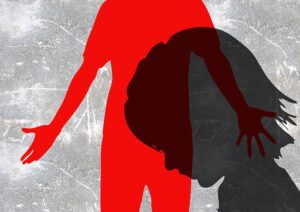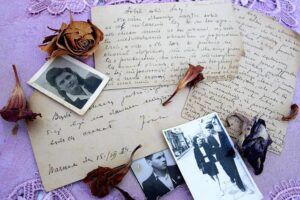One of the most important aspects of a thriller novel is the flashback. This device allows you to reveal crucial information to the reader in a way that is both suspenseful and entertaining.
However, many writers are unsure how to use flashbacks correctly. This blog post will discuss the rules for writing flashbacks and how to trigger them at the right moment in your story. We’ll also explain why every thriller needs a good flashback.
What is a flashback, and what are its purposes in a story?
A flashback is a scene or series of scenes that take the reader back in time. You can use it to reveal crucial information about a character’s past or to provide context for the events of the present story. You can also use flashbacks to heighten suspense or to add an element of mystery.
The different types of flashbacks and when to use them
There are two main types of flashbacks: internal and external. Internal flashbacks are thoughts or memories that a character has during your story. In contrast, external flashbacks are scenes from an earlier time in a character’s life.
Internal flashback scenes:
An internal flashback is a scene in a character’s mind instead of being shown through objective events. You can use this flashback to reveal important details about a character’s past, thought process, or innermost desires.
You can do an internal flashback scene in many different ways. It depends on what you want to achieve with the scene and what will work best for your story.
Here are a few examples to give you some ideas:
-You could have the character thinking back to a specific event that was significant to them. It could be something happy, like a fond childhood memory, or something more traumatic they’re trying to come to terms with.
-You could use an internal flashback as a way to show the character’s motivations for their current actions. Why are they doing what they’re doing? What drove them to this point?
Here are a few examples of internal flashbacks in films:
The Silence of the Lambs – In this classic thriller, Hannibal Lecter (played by Anthony Hopkins) recalls his early days with his sister Misha. This powerful scene gives us insight into Lecter’s dark past and how it has shaped his monstrous present.
The Empire Strikes Back – In one of the most iconic scenes in film history, Luke Skywalker (played by Mark Hamill) is trained by Obi-Wan Kenobi (played by Alec Guinness) in a Force vision. This is an example of an external flashback, as it shows events that happened in the past.
In To Kill a Mockingbird, Scout recalls when her father saved her from being stung by a bee. This memory is triggered when she sees someone else being teased and thinks about how her father would have handled the situation.
In Christopher Nolan’s mind-bending thriller Memento, the protagonist Leonard (played by Guy Pearce) suffers from short-term memory loss and uses Polaroid photographs and tattoos to remember. Internal flashbacks are used throughout the film to show how Leonard’s condition affects his memory.
External flashback scenes:

External flashback scenes are often used to show the audience events before the story’s main plot started. They can help fill in backstory but should be used sparingly because they can interrupt the flow of the story.
Here are a few examples of external flashbacks in films:
External flashback scenes can provide useful context and backstory for the viewer. For example, in the movie The Dark Knight, there is a scene where the Joker visits Harvey Dent in the hospital. This scene provides context for Dent’s transformation into Two-Face.
You can also use external flashback scenes to show a character’s memories or thoughts. For example, in the movie Forrest Gump, there is a scene where Forrest remembers his childhood meeting with President John F. Kennedy. This scene shows how Forrest’s innocence shaped his later decisions.
The opening scene of Star Wars: A New Hope shows Luke’s father, Anakin Skywalker, fighting in a battle against the evil empire.
The flashback scene near the beginning of The Sixth Sense shows Malcolm meeting with his dead therapist.
In The Godfather, Vito Corleone is a young man in Sicily before he comes to America, which provides some context for his later actions as the head of the Corleone crime family.
In The Shawshank Redemption, we see Andy Dufresne as a young man in prison before he is sent to Shawshank prison, which shows how he becomes hardened and adapts to prison life.
In an external flashback from The Price of Silence, we see how the protagonist expresses her loneliness and resentment as a child and young teenager. Here is a sample:
– She watched her parents and wanted to get close to them but didn’t know how to do it. Feeling miserable, she took it out on her nannies. Many came and went. She was the kid from hell. By the age of thirteen, she’d become a head-turner. Then, things changed. It seemed as if her parents had suddenly discovered her. They started to meddle in everything she did. They insisted she wears dresses instead of jeans, interfered with her choice of friends, and referred to anyone with darker skin as “those people.”
External flashbacks are generally more effective, allowing the reader to experience the events alongside the characters. However, you can use internal flashbacks to great effect as well.
How to write effective flashbacks that propel your story forward?
The key to writing an effective flashback is ensuring it serves a purpose. Ask yourself why the reader needs to know this information and how it will help move the story forward.
It’s also essential to choose the right moment to introduce the flashback. If it’s too early, readers may not be invested enough in the story to care. If it’s too late, the flashback may feel like a cheap ploy to introduce information you should have included earlier.
Triggers for flashbacks – what makes readers want to revisit past events?

The best flashbacks are usually triggered by something in the present story. For example, a character might see an old photograph or receive a letter from the past that sets off a chain of events in the present day that leads them—and the reader—back in time.
Thrillers often use flashbacks to introduce information about the past that is relevant to the present-day story.
Here are a few key triggers that can prompt a reader to want to revisit past events:
– A sense of foreboding or unease about the present situation
– A character behaving out of character
– A sudden change in tone or pace
– An unexpected plot development
By including these triggers in your writing, you can allow your readers to explore the backstory of your characters and learn more about what motivates them.
While flashbacks can be an effective tool for creating suspense and tension in a story, it’s essential to use them sparingly. Too many flashbacks can disrupt the flow of the story and confuse readers.
Tips for weaving flashbacks seamlessly into your narrative
Once you’ve decided to introduce a flashback, a few things to keep in mind to ensure that it flows smoothly with the rest of the story.
– Make sure the details in the flashbacks are relevant to the present story.
– Use transitional phrases or sentences to signal readers that they are moving from the present into the past.
– Be consistent with the point of view you are telling the flashback.
Why every thriller needs a well-executed flashback sequence

While you can use flashbacks in any genre, they are particularly well-suited for thriller stories. Because you can use flashbacks to provide readers with crucial information about the past that helps explain the current events.
For example, you might use a flashback to reveal how a character became motivated to commit a crime. Without this crucial information, the present story would be much less suspenseful and exciting.
Rules for writing flashbacks effectively
When used correctly, flashbacks can be a powerful tool for adding depth and intrigue to a story.
Here are a few rules you should follow to write an effective flashback:
– Use transitional phrases or sentences to signal readers that a flashback is about to occur. For example, “on the other hand,” “to begin with,” “in contrast,” and “nevertheless.”
– Be concise and keep the flashbacks short – a few paragraphs are sufficient.
– Use dialogue and sensory details to bring the events of the flashback to life for readers.
It is also essential to consider how and why you include a flashback in your story:
– Are you using the flashback to provide background information on a character?
– To reveal how a particular event has shaped the course of your story’s events?
– Or are you hoping to create suspense or foreshadow future events?
Answering these questions will help you determine whether a flashback is the best way to achieve your desired story goal.
If you’re still not sure how to write a flashback, consider these questions:

– What event from the past would provide critical information about my characters or story that I cannot reveal in any other way?
– What event from the past would help readers understand my characters’ motivations?
– What event from the past would add suspense or tension to my story if I revealed its details later on?
Answering these questions should give you a better sense of how to write a flashback that will work well in your story.
Examples of compelling flashback scenes from popular thrillers
While it’s helpful to understand how to write a flashback, it can also be helpful to see examples of effective flashbacks in action.
Here are three flashback examples of well-done flashbacks from popular thrillers:
– In Gone Girl by Gillian Flynn, the reader is shown a series of events from Nick and Amy’s relationship leading up to Amy’s disappearance. These flashbacks help to paint a picture of the complex, dysfunctional relationship between the two main characters.
– In The Girl on the Train by Paula Hawkins, Rachel’s alcohol-fueled blackouts allow the author to show readers critical events from her past that help explain her current state of mind.
– In Big Little Lies by Liane Moriarty, the author uses flashbacks to slowly reveal the events of that fateful night at Trivia Night from each character’s perspective.
– In my novel, The Price of Silence, I used Tyler’s justification for breaking up with his parents to reveal some of his disturbing character and mindset.
While there are no hard and fast rules for how to write a flashback, there are some things to keep in mind that will help you create an effective one.
First, consider what purpose the flashback serves in your story. Is it to provide a crucial backstory to help readers understand a character’s motivations? Is it to add tension or suspense by hinting at what’s to come? Or is it simply to break up the action and provide relief from the main plot?
In conclusion
Flashbacks can be a powerful tool to help readers understand your story and its characters. By understanding the different types of flashbacks and when to use them, you can write effective flashbacks that propel your story forward while providing valuable insights into your characters’ thoughts and motivations.
Pay attention to the triggers that make readers want to revisit past events, and take care to weave flashbacks seamlessly into your narrative for a cohesive reading experience. With these tips in mind, you’ll be able to create flashback sequences that are both captivating and enriching for your readers.
Thus, if you’re planning to write a thriller, include at least one well-executed flashback sequence!
If you’re working on your first novel and are looking for more help with your writing, please check out my other articles at https://ullahakanson.com/blog/
Happy writing! 🙂
Ulla

